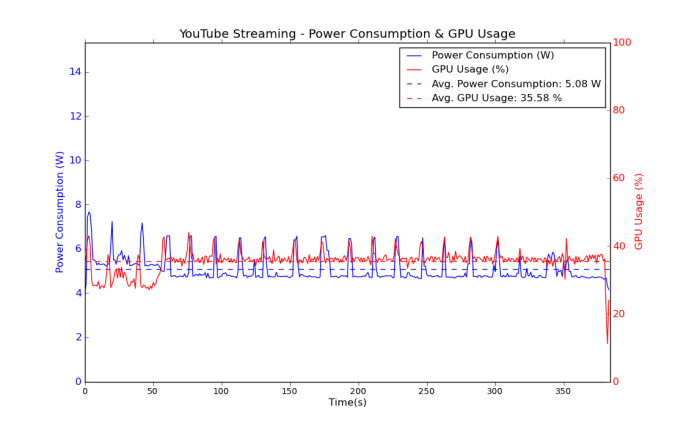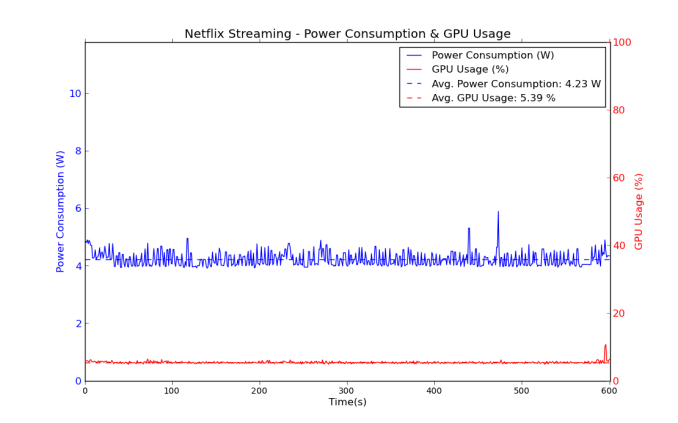ECS LIVA Review: The Nettop Rises Again
by Ganesh T S on July 18, 2014 9:15 AM ESTHTPC Credentials - Network Streaming and Local Playback
Given the ECS LIVA's fanless nature and the presence of Intel HD Graphics, we expect most purchasers to use it as a media playback machine / HTPC. Given the specifications, it is quite clear that we are not looking at a madVR capable machine, but one targeted at the entry-level / average HTPC user or someone looking for a HTPC to put in a second or third room (non-primary HTPC). There are two HTPC aspects that we will explore in this section, one related to network streaming (OTT services), and the other related to local file playback. Prior to that, we have a small sub-section dealing with refresh rate accuracy.
Custom Refresh Rates
We found last year that Haswell provided excellent display refresh rate accuracy, but never tested out Bay Trail systems on that aspect. Fortunately, our experience with the ECS LIVA put any lingering doubts to rest.
The gallery below presents some of the other refresh rates that we tested out. The first statistic in madVR's OSD indicates the display refresh rate. madVR itself drops plenty of frames to keep up with the playback requirements (which is expected given the system specifications), but those are not related to the refresh rate of the display.
Network Streaming Efficiency
Evaluation of OTT playback efficiency was done by playing back our standard YouTube test stream and five minutes from our standard Netflix test title. Using HTML5, the YouTube stream plays back a 720p encoding, while Adobe Flash delivers a 1080p stream. The power consumption at the wall as well as the GPU usage while playing them on Mozilla Firefox are provided in the graphs below.
YouTube Streaming - HTML5
YouTube Streaming - Adobe Flash
Netflix streaming evaluation was done using the Windows 8.1 Netflix app. Manual stream selection is available (Ctrl-Alt-Shift-S) and debug information / statistics can also be viewed (Ctrl-Alt-Shift-D). Statistics collected for the YouTube streaming experiment were also collected here.
Playback using Adobe Flash is leaner on the resources compared HTML5 streaming. This is likely due to the fact that the HTML5 stream delivers a 720p version which needs scaling in addition to decoding for display on a 1080p screen. In any case, the power numbers for YouTube and Netflix streaming are the lowest that we have seen on a desktop machine so far.
Decoding and Rendering Benchmarks
In order to evaluate local file playback, we concentrate on XBMC's native decoding / rendering (used by the average HTPC user) and the combination of native DXVA decoding with EVR and EVR-CP (using MPC-HC v1.7.3). The following table summarizes the GPU usage and power consumption at the wall in various cases. Numbers in bold indicate visible dropped frames.
| ECS LIVA - Decoding & Rendering Performance | ||||||
| Stream | EVR | EVR-CP | XBMC | |||
| GPU Load (%) | Power (W) | GPU Load (%) | Power (W) | GPU Load (%) | Power (W) | |
| 480i60 MPEG2 | 75.44 | 6.22 | 69.64 | 6.14 | 80.62 | 7.19 |
| 576i50 H264 | 72.94 | 5.81 | 68.85 | 5.81 | 42.16 | 4.91 |
| 720p60 H264 | 74.46 | 6.87 | 79.47 | 7.55 | 86.32 | 6.86 |
| 1080i60 MPEG2 | 92.78 | 8.17 | 98.44 | 8.40 | 87.73 | 7.82 |
| 1080i60 H264 | 98.78 | 8.51 | 95.71 | 8.44 | 91.65 | 8.07 |
| 1080i60 VC1 | 98.03 | 8.49 | 97.88 | 8.52 | 88.95 | 7.98 |
| 1080p60 H264 | 80.63 | 7.39 | 98.37 | 8.63 | 88.63 | 8.06 |
| 1080p24 H264 | 36.80 | 5.30 | 45.89 | 5.70 | 43.23 | 5.20 |
| 4Kp30 H264 | 67.39 | 6.47 | 99.13 | 8.58 | 70.36 | 6.59 |
The ECS LIVA is more than sufficient for XBMC playback of common media files (DVD - 480i60, Blu-ray - 1080p24 etc.). It is only when it comes to high resolution / high frame-rate interlaced videos that problems start creeping in. That said, I do believe that the average / entry-level HTPC user's playback requirements probably don't include such video streams.
HD audio bitstreaming works if one downloads the audio drivers directly off Intel's website. However, with the Netflix Windows 8.1 app in our setup (ECS LIVA + Pioneer Elite VSX-32 + Sony KDL46EX720), attempts to bitstream Dolby Digital Plus resulted in the video completely freezing. This is the same bug that I talked about in the Intel NUC review at the beginning of the year, and it continues to be unresolved to this date. In fact, this problem is not restricted to the Netflix app, but even XBMC, if it attempts to bitstream Dolby Digital Plus in non-WASAPI mode. As a non-primary HTPC, users are probably not going to use the ECS LIVA to bitstream HD audio. Intel should still look into it for using their iGPU in a primary HTPC. The problem is quite clearly in the Intel HD Audio driver, and a fix for that is long overdue.



















55 Comments
View All Comments
djfourmoney - Wednesday, July 23, 2014 - link
Tell the truth. Even video editing is marginal in Linux. Many people don't have the disk space, don't know what a NAS is, routers with NAS capability are towards the high end of the consumer market so no BluRay playback, you would have to rip the disk with the proper software and then store the file someplace.Of course you could use the usenet, but no further details from me and most people barely understand torrents, never mind usenet...
The reason why the iPhone is popular because it's dead simple to use, hardware is barely touted and it's all about the apps and accessories. Just when you think hardware makers would standardize the location of the mini USB port on Android phones, a whole slew of cheap devices throw cold water on that.
Chromebooks works because Google Chrome works as a browser with apps.... Considering how much I use Chrome, I am going to use this laptop I am typing on (quad core AMD) for desktop replacement, Sony Vegas supports AMD hardware for faster encoding, so does Studio 17.
Just remove the hybrid drive and replace it with a 1TB SSD as prices continue to drop, use a USB 3.0 512GB External SSD for archiving footage/mobile storage. Currently 8GB Dual Channel @1600Hz, I could upgrade to 16GB @1600 as well.
Once that happens, one of the larger Chromebooks would be perfect for internet browsing, streaming,etc.
Though I need a laptop or Surface/Ultrabook type device for DJ'ing.
Still like the Liva as a x86 Pi killer.
Soul_Est - Monday, July 28, 2014 - link
If you really tried to learn and use Cinelerra (Pro level), Blender, OpenShot, Pitivi, or Avidemux, then you cannot say that video editing under Linux is 'marginal'.davolfman - Friday, July 18, 2014 - link
Could you test Steam in home streaming at least wired with little systems like these? I think that's an increasingly less rare use case.dylan522p - Friday, July 18, 2014 - link
It works really well. I run it on a quadcore baytrail system with teh same iGPU, but it only sees about 25% usage so you should be finewireframed - Saturday, July 19, 2014 - link
At least in theory, anything that can decode h.264 at whatever resolution you want to display should work fine for In-Home streaming. The client PC isn't really doing anything but sending controller input and decoding the resulting video stream. There's probably a tiny bit of overhead from the Steam API but it should be neglible.abufrejoval - Friday, July 18, 2014 - link
This should be a pretty nice Android box and a more flexible alternative to Hardkernel Odroids, especially with the 64-bit L(ollipop?) release.I've so far been using Minit-ITX variant with the J1900 Bay-Trail, which are quite a bit bigger and I've been yearning for something which has everything soldered on so it can be made smaller.
Those are pretty good already in terms of (Android!) game performance and certainly good enough for surfing, Android Office or as a thin client (RDP/Citrix/Splashtop) to some big iron.
For Android the 32GB eMMC are really none too bad and for anything beyond there is always USB 3 and network.
But I'd also want 4GB or even 8GB perhaps as optional configs, because the cost difference is so small it shouldn't matter and one might actually run a full Linux on there, just for the fun of it.
With regards to the power usage, I found no measurable difference on the J1900 between 4GB and 8GB (one or two modules) of DRAM, so that shouldn't matter.
Dunno if eMMC 4.4 is a platform limitation of BayTrail or just what they put there, but eMMC 5.0 would give much better performance with diminishing price premiums.
Even with 4GB DRAM it should stay below $149 to sell like hotcakes.
TerdFerguson - Friday, July 18, 2014 - link
If the device is primarily intended to be a set-top HTPC device, why doesn't it come with a built-in programmable IR receiver and blaster?Blassster - Friday, July 18, 2014 - link
Would this be too underpowered to run POE ipcam software thats stores the video to a NAS or external drive and also allow Internet streaming of a select camera? Let's say 4 1080p cameras (or even 720p).tipoo - Friday, July 18, 2014 - link
I'm more interested in the $250 Gigabyte Brix with the AMD APU in it, seems like a fair bit of GPU and CPU bang for your buck for that price.JadedMan - Saturday, July 19, 2014 - link
Any idea if this machine play a typical 3D Bluray properly?